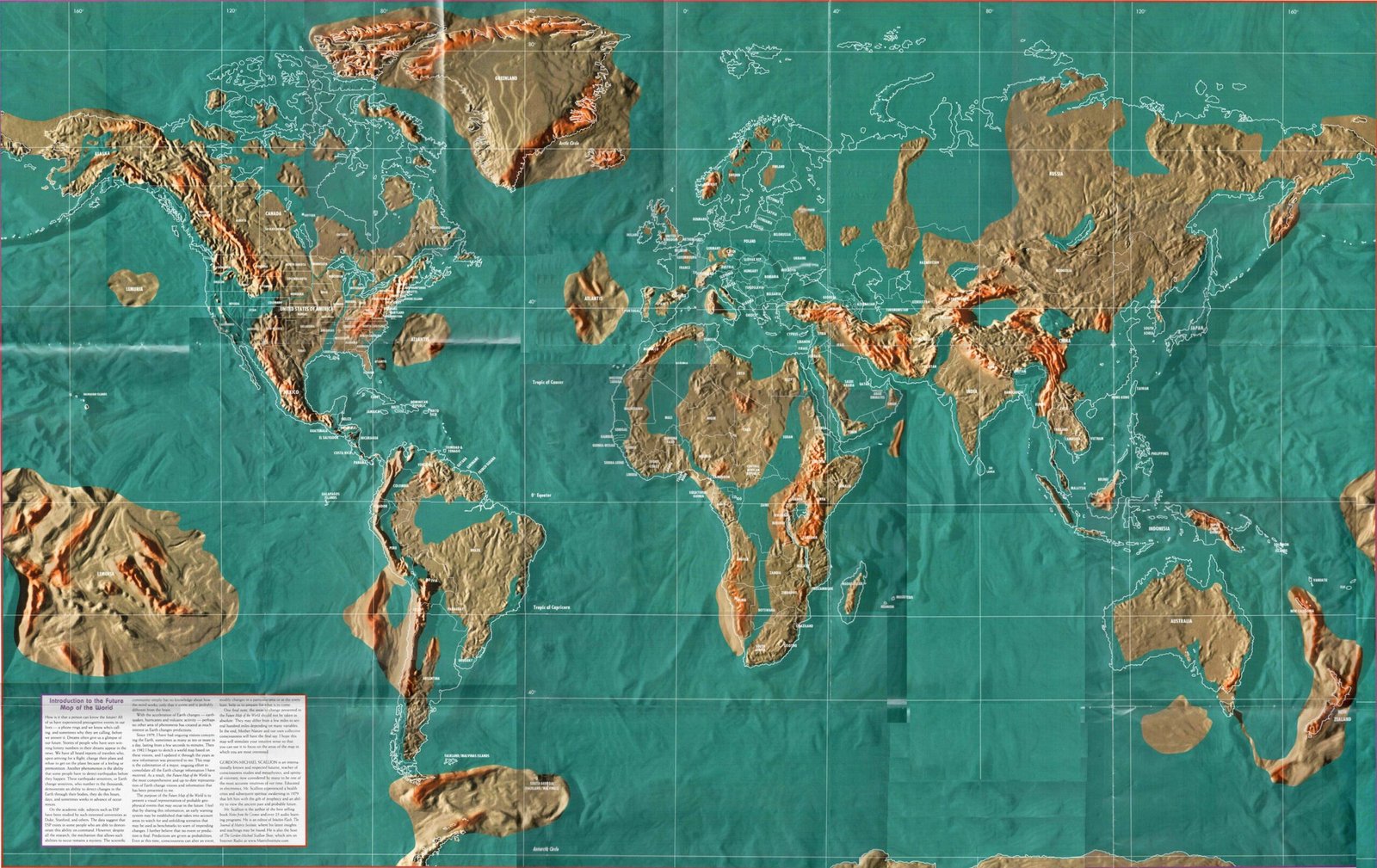The Future Map of the World: Trends and Predictions

As we look toward the future the map of the world is expected to change in significant ways. Geopolitical dynamics, climate change, technological advancements, and population shifts will all play crucial roles in shaping the world we live in. Understanding these changes is essential for planning and adapting to the future. This article explores the potential transformations in global geography, highlighting factors that will influence how our planet is organized and governed.
Geopolitical changes are one of the most significant drivers of how the future map of the world may look. As countries grow in power or face challenges, borders may shift, and alliances may change. Additionally, climate change will impact land use, agriculture, and habitability in various regions. Technological advancements will also influence how we perceive and interact with the world. This article aims to provide insights into these trends, giving readers a clearer picture of what the future may hold.
Geopolitical Changes Shaping the Future
Emerging Powers
In the coming decades, we are likely to see the rise of new global powers. Countries like India, Brazil, and Nigeria are expected to become increasingly influential on the world stage. These nations are experiencing rapid economic growth, which will enhance their political clout. As they assert their interests, we may witness shifts in alliances and trade partnerships, reshaping the geopolitical landscape.
For instance, India is projected to become one of the largest economies in the world. As it grows, India may play a more significant role in global affairs, impacting relationships with established powers like the United States and China. Similarly, African nations, particularly Nigeria, are likely to gain prominence due to their young populations and rich natural resources. This emergence of new powers may lead to a multipolar world, with several countries sharing influence rather than a single superpower dominating.
Territorial Conflicts
Alongside the rise of emerging powers, existing territorial disputes could intensify. Regions such as the South China Sea, Eastern Europe, and the Middle East are hotspots for conflicts over land and resources. As countries assert their claims, tensions may rise, leading to changes in borders or governance.
For example, the South China Sea is a critical area for global trade, and China’s assertive claims have raised concerns among neighboring countries and the United States. As nations vie for control over these waters, we may see a shift in how maritime boundaries are drawn. Similarly, in Eastern Europe, the ongoing tensions between Russia and Ukraine have implications for regional stability and territorial integrity.
Climate Change and Its Impact on Geography
Rising Sea Levels
Climate change is another significant factor that will influence the future map of the world. Rising sea levels threaten coastal cities and low-lying areas, leading to potential displacement of populations. Cities like Miami, New Orleans, and Jakarta may face increased flooding and erosion, prompting governments to rethink urban planning and infrastructure.
As coastal areas become less habitable, populations may migrate inland or to other countries. This could lead to new demographic patterns and shifts in political power. Countries that are more resilient to climate change may see an influx of migrants, further altering the social and political landscape.
Changes in Agriculture
Additionally, climate change will impact agriculture, affecting food production and distribution. Regions that were once fertile may become less suitable for farming, while other areas may become more productive. For example, warmer temperatures could allow northern regions, such as Canada and Russia, to cultivate crops previously grown in warmer climates.
This shift in agricultural zones may lead to changes in trade patterns as countries adapt to new growing conditions. Nations that can successfully transition their agricultural practices will have a competitive advantage, potentially reshaping global markets.

Technological Advancements and Future Mapping
The Role of Technology
Technology will play a crucial role in shaping the future map of the world. Innovations in communication, transportation, and data analysis will change how we interact with our environment. For instance, advances in remote sensing and geographic information systems (GIS) allow for more precise mapping and monitoring of changes in land use and population distribution.
Moreover, technological advancements in transportation, such as electric and autonomous vehicles, could reshape urban landscapes. As cities adapt to new modes of transportation, we may see changes in infrastructure, zoning laws, and urban planning. This could lead to more sustainable and efficient cities, impacting where people choose to live and work.
Virtual Mapping and Augmented Reality
The rise of virtual mapping and augmented reality also promises to change how we perceive geography. As technology becomes more integrated into our daily lives, we will have access to real-time information about our surroundings. This will enhance our understanding of the world, making it easier to navigate and interact with our environment.
For example, augmented reality applications could allow users to visualize geographic data in real-time, helping them make informed decisions about travel, investment, and community planning. As these technologies become more widespread, our relationship with geography will evolve, further influencing how we map the world.
Conclusion
In conclusion, the future map of the world will be shaped by a combination of geopolitical changes, climate change, and technological advancements. As emerging powers gain influence and existing territorial disputes continue, the geopolitical landscape will evolve. Climate change will also have a profound impact on where people live and how they interact with the environment.
Technological innovations will enhance our understanding of geography and reshape urban landscapes. By examining these trends, we can better prepare for the changes that lie ahead. Understanding the future map of the world is essential for governments, businesses, and individuals alike as we navigate the complexities of a rapidly changing global landscape.
FAQs
Q: How will climate change affect the future map of the world?
A: Climate change will lead to rising sea levels, impacting coastal cities, and changing agricultural zones, affecting food production and population distribution.
Q: Which countries are expected to emerge as global powers?
A: Countries like India, Brazil, and Nigeria are expected to gain influence due to their economic growth and political aspirations.
Q: What role does technology play in shaping future geography?
A: Technology enables precise mapping, enhances transportation, and allows for real-time information access, influencing urban planning and geography perception.
Q: Will territorial disputes increase in the future?
A: Yes, ongoing territorial disputes, particularly in regions like the South China Sea and Eastern Europe, are likely to intensify as nations assert their claims.
Q: How might migration patterns change in the future?
A: As climate change impacts habitability, populations may migrate from coastal areas to more resilient regions or countries, altering demographic patterns.





